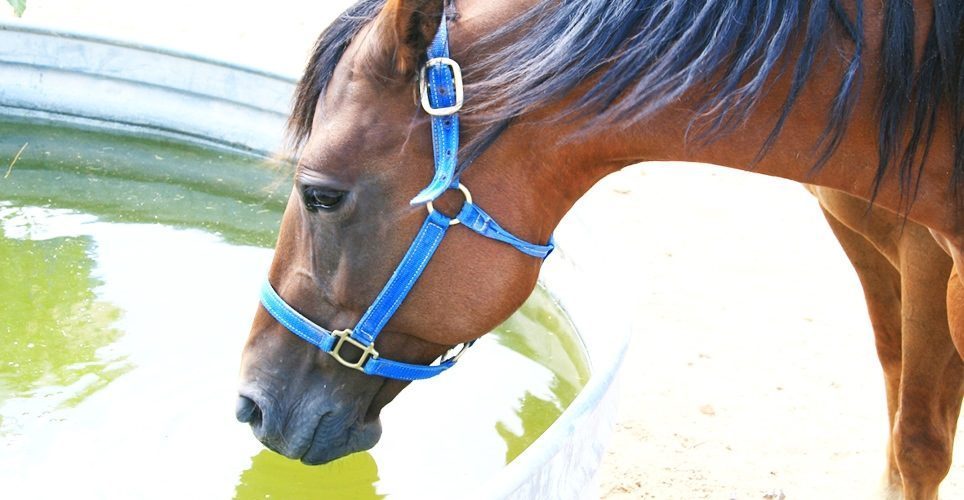
When Dick Lester purchased the 650 acre Spring Valley Ranch in Cherokee County in Iowa, he felt he needed to better utilize the hilly pasture and provide his livestock with a healthier water source than the creek that runs through his pasture. Lester's new watering system was completed in 2008 and includes three watering tanks, each elevated and far enough distances from the creek. Lester is one of several northwest Iowa livestock producers to implement solar-powered watering systems in recent years. Lester's system was planned, installed, and cost shared through the Iowa Lakes Resource Conservation and Development (RC&D), based in Spencer, Iowa. Iowa Lakes RC&D coordinator referred to Lester's livestock watering needs as "worst-case scenario" in regards to the distance and elevation the water needed to be pumped; however, they were able to provide him with a system that worked perfectly to fit his needs.
The system that was put in place is able to provide energy to pump water for Lester's livestock, allowing him and his operators, Britt and Mark Carlson, to better utilize their pasture, save money, reduce stream-bank erosion and improve cattle performance on his newly purchased acreage.
"The placement of the watering tanks allows better forage utilization," said Lester. "If you go up the hills now, you can see the cattle using the the whole pasture. His ranch hands, the Carlsons', say their 300-head of purebred Angus cattle are no longer all together, but spread out near the watering tanks, which they like.
The solar-powered watering system provides cost an energy savings, also. Lester saved a significant amount of money by choosing not to run electricity to his remote pasture site for pumping power. The rural electric company (REC) that services northern Cherokee County estimated it would cost about $4.75 per foot, or more than $20,000.00, to run electricity to his water pump. "I like the idea of solar power and not depending on electricity from the grid to run it," he said. "The pasture is a good mile off of the road. That is a long way to run electricity." Lester says the solar-powered system will save him money in the long run. "Once the system is installed, that's the end of it," he said. With an electric pump, Lester would pay about $30.00 in basic monthly fees, not including the cost to run the pump.
Some more benefits of the solar-powered system is livestock health, erosion control, and water quality. Cattle stay in better health when they have access to clean, reliable water. Stream-banks along Lester's creek are healing with signs of reduced erosion from the cattle and vegetative growth. This results in cleaner water with less sediment build-up. Lester said it's amazing how quickly the grass returned to the stream-banks since installing the new solar powered watering system.
Dewey Stouffer, of Little Sioux Prairie Company, installed Lester's solar powered livestock watering system. Lester's system delivers water from the creek through a pea gravel trench, buried 15 feet underground, to a helical rotary pumps. Eight 175-Watt solar panels power the pump that sends water through 4,600 feet of pipe to three watering tanks, reaching elevations of 150 feet above the pump. Water levels in the tank signal the pump to add water. When there is demand for water, a valve opens, and the pressure tank supplies water until the pressure is gone. Then the system pumps nine gallons of water per minute up the hill until the tank shuts off. Then the system will pressurize again and shut off.
The size of pump and the number of solar panels you need depends on the number of cattle, water source, lift, and how far the water needs to be pumped. Solar powered systems, like Lester's, rely on sunlight to generate power to the pump. The estimated cost for a pumping system for watering livestock usually ranges from $5,000.00 to $7,000.00, depending on the pump, number of water tanks, feet of pipe, number of solar panels, and the hours of labor needed to install the system. The life expectancy of a system is about 20 years. It is recommended to keep the solar panels clean for optimum performance.